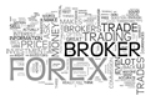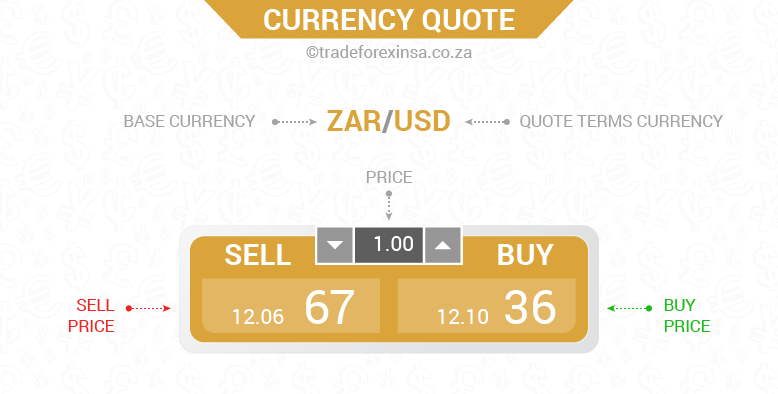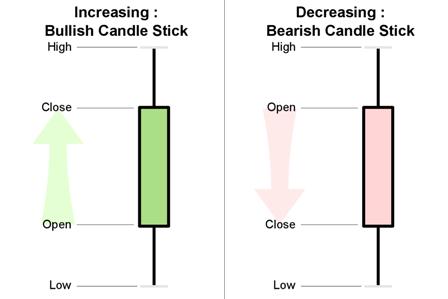Forex Trading in South Africa
 Foreign Exchange Trading or Forex as it is more popularly known around the world is one of the most heavily traded markets in the world, churning out trillions of dollars in trading volume every single day. Forex markets are heavily traded in the major nations of the world, as well as some smaller markets. The real history of the forex market in South Africa can be dated back to the late 1980’s. The market experienced an unprecedented growth starting from 1987 to 1990, where the average rate of growth was almost 23.5% per year. The level was on-par with other leading forex markets, such as that of the United Kingdom, Canada, Japan and the U.S, who had experienced a growth of up to 30% per year in the same three year period.
Foreign Exchange Trading or Forex as it is more popularly known around the world is one of the most heavily traded markets in the world, churning out trillions of dollars in trading volume every single day. Forex markets are heavily traded in the major nations of the world, as well as some smaller markets. The real history of the forex market in South Africa can be dated back to the late 1980’s. The market experienced an unprecedented growth starting from 1987 to 1990, where the average rate of growth was almost 23.5% per year. The level was on-par with other leading forex markets, such as that of the United Kingdom, Canada, Japan and the U.S, who had experienced a growth of up to 30% per year in the same three year period.
In more recent years, the South African Forex market has grown to be one of the leading markets in the world and functions slightly differently compared to the others. A salient feature of the South African Forex market is the influence and control of the country’s central bank. In spite of this, the basic principles of forex trading are the same as in any other market, which we will discuss in the article below.
How to trade in Forex
The first fundamental question any trader asks is – Why choose the Forex market In the first place. The Forex market can be beneficial and more suited to many traders because of the host of advantages offered, as described below.
Accessibility and Convenience: The Forex market is the most active market in the world and having a grander reach than other types of trading like Stocks, CFDs etc. Much of this can be attributed to the emergence of online brokers, which enable any individual to trade on the forex market with just a computer, a working bank account and an active internet connection.
Smaller Market Place: The forex market revolves generally around the major eight currencies in the world, allowing traders to focus on a smaller number of options compared to other markets. For instance both the Cryptocurrency and the stock markets have tens and thousands of different investment options to choose from, which may be a major disadvantage for novice traders.
Degree of Liquidity: The forex market experiences a large degree of liquidity, partly due to the enormous volume of currency traded on a daily basis. This enables traders to buy and sell currency as they please under “normal” market conditions.
Un-cornerable: The massive volume and scale of the forex market means that no one entity can corner or “influence” the market. Even banks do not have the power to exercise their full control on the market.
How to Trade Forex (Four Simple Steps)
Trading Forex at first can be quite overwhelming especially for novice traders. There is a certain element of risk attached to forex trading, especially if the trader is ill-informed, misguided or does not have a complete grasp of the concept. That being said below is a brief step by step guide to start trading in the South African Forex market.
- Selecting a currency Pair: The first step involves selecting a currency pair, as forex trading is all about exchanging the value of one currency for another. The most commonly traded currencies, namely, the EUR and the USD, are generally offered by the majority of the brokers and thus a very popular selection for traders who want to start their forex journey. South African brokers also offer trading in the RAND, the national currency which is paired up with other currencies such as ZAR/EUR, ZAR/USD etc.
- Conducting Proper analysis: As mentioned before, entering the forex market involves a lot of knowledge as well as the ability to constantly analyse the market. Valuable resources such as historical price charts and trends, announcements and regulations made by foreign governments and updated information about the currency’s current market situation are crucial weapons in this field. By following a game plan after carefully analysing the market situation, traders can avoid taking misguided decisions out of fear or any other emotions.
- Reading Quotes: Currency quotes are prices which are shown for all of the currency pairs listed on a particular exchange. A currency quote for the ZAR/USD(hypothetical), would look something like this:

The red figure indicates the price at which a trader can sell a particular currency pair, while the green figure indicates the buying price. There is a marked difference between both of these rates, which is the amount the dealer or broker charges for facilitating the trade. This difference in amount is known as a “Spread”. Spreads can vary from one dealer to another - Picking a Position: This is probably the most crucial step of making a trade. Contrary to trading stocks, bonds of other financial products, where speculation only involves one direction, forex traders can speculate on both up and down movements in the market. There are two types of positions available, a Buy position and a Sell position.

Entering a Buy position: When a trader believes that the value of a particular base currency will rise compared to the quote currency, he/she should go for a buy position. In our example, the base currency is the RAND. If the current price of the ZAR/USD pair is 1.33820/840, a trader can perceive that a bullish sentiment is behind the Rand and subsequently enter a buy position. After a considerable period of time, if the trade has gained (say) 30 pips and the price is 1.34160/180, a trader can close his position at the current sell price and enjoy a profit.Entering a Sell Position: It is exactly the opposite of a buy position! A sell position should be taken if there is a considerable degree of “bearish” sentiment attached to the RAND. In this case, if a trader enters a sell position for the Rand, he/she may close the position after losing pips on a trade and accept the losses.
* It is to be noted that the above is just a simple example and does not encompass all the varying techniques and nuances of forex trading.
Best Forex Broker, Forex-CFD Broker and CFD-Provider in South Africa
| *Note: CFDs carry Risk. 73-89% of traders lose |
| Broker/Platform | Website | Regulation | Max. Leverage | Min Deposit | Demo |
|---|---|---|---|---|---|
| Visit CFD platform* Plus500 Review CFD Service. Your capital is at risk | FSCA/ASIC  | 1:30 | $ 100 | Yes | |
| Visit Broker* RoboForex Review | IFSC | 1:2000 | $ 10 | Yes | |
| Visit Broker* BlackBull Markets Review | FSPR and others | 1:500 | $ 200 | Yes | |
| Visit Broker* IQ Option Review |  | 1:500 | $ 10 | Yes | |
| Visit Broker* IC Markets Review | FSA | 1:500 | $ 200 | Yes | |
| Visit Broker* Avatrade Review | FSCA and others  | 1:400 | $ 100 | Yes | |
| Visit Broker* Markets.com Review | FSCA and others  | 1:300 | $ 100 | Yes | |
| Visit Broker* CMTrading Review | FSCA  | 1:200 | $ 250 | Yes | |
| Visit Broker* Vantage Review | CIMA | 500:1 | $ 200 | Yes | |
| Visit Broker* BDSwiss Review | CySEC and others | 1:400 | $ 100 | Yes | |
| Visit Broker* OInvest Review | FSCA | 200:1 | R3500 | Yes |
How to choose the right Forex broker
No Forex trade will be complete without choosing a competent forex broker. Forex traders in general charge significantly less when it comes to transaction costs. However, there are many forex brokers carrying out operations in the South African market, and the choosing the right option can be quite confusing, especially for a novice. Below are just some of the major considerations a trader should make before choosing a particular Forex broker.
Safety and Security: The single most important and talked about point in forex trading is account security. The Forex market involves the circulation of enormous volumes of money which may be compromised because of a hack or a data breach, particularly in the case of online brokers. Hence a trader should always ensure that the broker is offering up to date protection against any unauthorised access, and has all the required security protocols such as data encryption in place, before offering the service.
Regulations: Another important aspect to consider is whether the broker is under a recognised regulatory body. This is of utmost importance in the modern marketing landscape since the influx of several scams and fraudulent activities in the past. Some of the major regulators of forex brokers include NFA and CFTC in the United States, FCA and PRA in the United Kingdom, ASIC in the region of Australia and FSB in South Africa.
Leverage options offered: Since the forex market moves slower compared to other markets, a high degree of leverage is offered by brokers so that traders can make a profit. In simple terms, leverage refers to a sort of “loan” which is provided by the broker to enable traders to open significantly larger trades. The collateral of the leverage is known as “margin”. Leverage ranges may vary between forex brokers between, 50:1, 100:1 and even 800:1 in some cases. Traders have to be vigilante when choosing their leverage, as larger the leverage chosen, the more risk is attached to the trade.
Demo Accounts Offered: In the case of online brokers, many organisations offer their users a demo account before they get the taste of real live trading. As forex involves a substantial degree of risk, novice traders can use demo accounts to hone their skills and get a grasp of all the important functions while using virtual money. This way, the risk is negligible for novice traders.
Customer Service: An often overlooked but important factor is the level of customer service offered. A dedicated and responsive team of customer care professionals must be present during the open market hours to resolve any unexpected situations a trader might be facing. A broker should also have multiple points of contact, like a working phone number, an email or a live chat which is reflective of the reliability of the broker.
Conclusion
The world of forex trading can be as exciting as can be dangerous at times, depending on the trader’s moves. A trader should have a proper grasp of the subject and about the currencies chosen before executing any trade. They should also take time to carefully select an appropriate forex broker, as one wrong move can spell danger for any trader.

